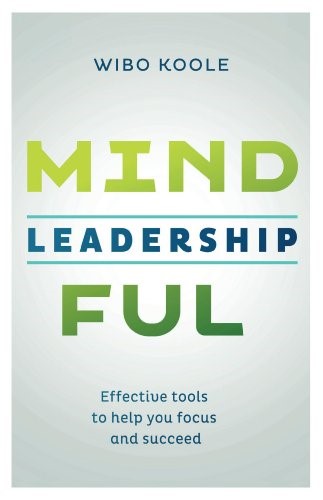What is important about this book?
Mindful leadership connects the benefits of the millennial practice of cultivating the sense awareness to the skills of leadership and to the challenges that life offers us daily in a clear, immediate and easy way. Koole starts with a “traditional” presentation of the effects of mindfulness (eg brain efficiency, awareness of our bias, prejudices, etc.), clearly relating them to what leaders need today to make decisions.
Thanks to his direct knowledge of today’s organizational context, the author also describes other skills that can be strengthened by the practice, highlighting how crucial they are for all of us, and in particular for those with roles of responsibility and coordination: resilience, management of emotions and stress, listening, innovation and the ability to develop psychological security in one’s collaborators.
By widening his gaze from the individual to the team and then to the organization, he shows how a mindful culture can be created through the sharing of small practices, tools, and working methods that concretely fit into daily activities. By doing this, he highlights that what is often considered a detached, “ascetic”, little pragmatic way of dealing with things is, in reality, “by nature and by method, a very practical approach”, both in ways as well as in results. The authors explains this alternating synthetic and very clear theoretical explanations with real cases and, above all, with exercises, easily practicable by any reader, recalling for many of the most recent managerial theories and methodologies, from U theory, to agile and design thinking.
Quotes
Leadership is about the question of how you can increase the capacity of people, teams and organizations within a system to see fully the reality they are dealing with and within which they must operate. To discover and develop the power of seeing and seeing together… ensuring that collective attention is directed on the here and now and, when necessary, on what is emerging (page 27)
Mindfulness also strengthen taking unconditional responsibility (…shifting our) attitude to life consciously from the question “What do I want to happen?” to one of “What does this situation ask of me?” (page 31)
The neural inputs from the body and the emotions unconsciously influences our reasoning and decision making… the judgement we make from moment to moment is influenced by the condition of our body at the moment of judging. And that shows how important it can be to make full use of signals from our body (page 68)
Synchronizing body and mind is the first step in developing the capacity for fearlessness (…) that means that you can react to the situation around you with openness and precision (page 73)
A resilient team is a team in which the uncertainty to which it is exposed through work and changes is not hidden away behind toughness, but is freely discussed (page 106)
Every change is always, in a psychological sense, the negation of what has always applied until then and thus inevitably causes turmoil and anxiety (…) greater attention must be paid to developing psychological safety in which change can take place, and this make the presence of a green zone of mindfulness of crucial importance (page 183)
Do not implement any culture program direct at mindfulness, but make the mindfulness practices and attitudes explained here part of the intervention for increasing productivity and motivation, so that customers and stakeholders can be supplied with greater value (page 184)
By practicing mindfulness in your leadership, your skills increase, because mindfulness is by nature and origin a practical approach (page 191)
Structure and contents of the book
The book is composed of five chapters, preceded by an introduction and followed by an epilogue. The first two chapters describe how mindfulness operates at the mental level, what kind of changes it brings to our way of acting and what benefits derive from it, at the level of individual well-being and organizational effectiveness. The third, fourth and fifth chapters deepen the skills that mindfulness improves in terms of leadership, teamwork and organizational culture, indicating what it does, how it works and with what means it is possible to implement it: the collection of exercises that each chapter presents is particularly rich, as well as the bibliography that closes them.
Conclusion
What I found interesting in Koole’s book is the co-presence of clear and concise scientific indications, capable of making the theses supported by the author solid and verifiable, and of real examples of their applications in the organizational field. Equally interesting is the overall view that Koole opens with respect to the theme of leadership, showing how the skills developed by mindfulness are precisely the ones that are necessary to implement the most modern organizational development theories. On the other hand, the risk is that this broadening of perspective puts too much at stake for those who want to start experimenting personally with the approach, making it appear less simple than it actually is, or contributing to the stereotype of considering mindfulness as a panacea for all illnesses. For the italian reader, who has approached the topic of mindfulness in organizations for less time than one might have done in Northern Europe, it is a good opportunity to see the practice of mindfulness as something that does not just offer a space of well-being to the individual, but can become an integral part of the culture and organizational practice, especially if, once developed individually, it does not remain relegated to the rooms dedicated to the “wellness break”, but becomes one of the elements and of the skills thanks to which we communicate, decide, innovate.
